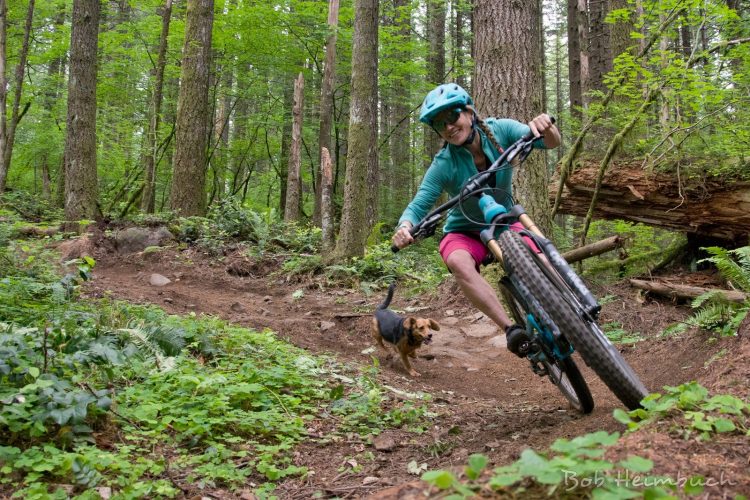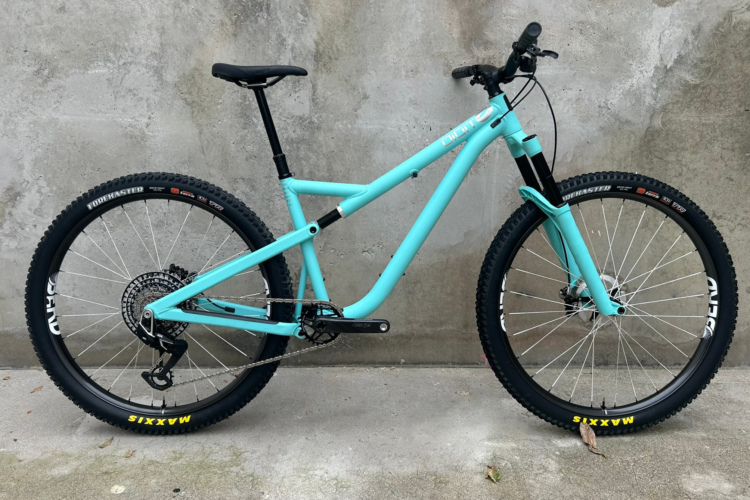
Scotland is a small country of just over 5 million people, but despite being small in population and relatively small in landmass, Scotland is BIG in mountain biking! I recently had the opportunity to spend a couple days riding in Cairngorms National Park–the largest national park in the UK–and I also spent a few days at a conference dedicated to all the work that Scotland is doing to develop mountain biking in their country. I came away from that experience thoroughly impressed, and convinced that Scotland may be the most progressive mountain bike destination in the world! Here are six reasons why:
1. Scotland has a national strategy for developing mountain biking in their country.

We could probably stop here, because I don’t think I’ve ever heard of an entire country, or even an entire state or province, having a truly comprehensive strategy for developing mountain biking. Sure, occasionally a great state–like Colorado–will have someone in charge of furthering bicycle access and trail building, but of the effort that person puts in, the vast majority of it is related to road cycling and commuting. Scotland, on the other hand, has as many as 2 and 1/2 full-time employees, depending on how you count it, dedicated to furthering the Scottish mountain bike experience.
The main head of this department, dubbed Developing Mountain Biking in Scotland (DMBinS, a subset of Scottish Cycling) is Graeme McLean, who works tirelessly in his full-time role to improve all aspects of mountain biking in Scotland. Danny Cowe also partners with him, but is employed separately by Edinburgh Napier University as a Business Development Executive. However, Danny’s role is to specifically develop the mountain biking industry in the country, and as such he and Graeme work closely to collaborate on strategies.
2. This strategy focuses on all aspects of mountain biking.

Occasionally in my travels I’ve observed an area or an organization that is following a dialed plan for mountain biking growth. But if that’s the case, that plan generally only deals with one aspect of mountain biking. For instance, IMBA is working hard to build more trails across the nation and around the world. Race organizations like USA Cycling and the Enduro World Series are working hard to develop excellent racing experiences, to varying levels of success. Still other organizations, like NICA, are working to bring up the next generation of riders and racers. And finally, some towns, like Fruita, are specifically trying to promote mountain bike industry in their areas.
While occasionally these people will get together and, say, build a trail with a NICA race in mind (like in Eagle, CO), generally these organizations work on their own individual goals in isolation, and often ignore the obvious connections between each different arm of mountain biking.
The entire goal of Developing Mountain Biking in Scotland is to create a “strategic mountain bike fit between all [the various] elements: participation, systems and places to ride, tourism,” and even business, with Danny Cowe’s work. This strategy is complex and multi-faceted–no part of the equation gets ignored, because all parts are important. If, for instance, you only focus on building trails out in the woods but don’t focus on teaching kids to ride, the sport will collapse in short order.
3. Scotland’s trail centres are some of the best trail systems in the world.

While admittedly I didn’t have the opportunity to personally visit one of Scotlands 40 renowned trail centres–we stuck to the more rugged and remote backcountry trails–after listening to several presentations on the quality of the trail centres, it was apparent that the forethought, the trail construction, and the amenities in each centre are truly top-notch.

The quality of the trail centres begins with the trail design. Scotland is renowned as a wet, rainy country, and the trails in trail centres are designed to shed water exceedingly well and be sustainable even when it’s pouring rain. While you may have heard the argument, “if we didn’t ride in the rain and the wet, we’d never ride!” as a justification for rutting up muddy trails, even the Scots realize that if a trail isn’t built sustainably then riding it when it’s really wet is going to cause significant trail damage. The trails in the centres are specifically designed to withstand all-season use and abuse.

Unlike the backcountry trails in Scotland, the trail centres are well-signed and easy to navigate on your own. You can also expect to find excellent amenities back at the car park. While these vary from centre to centre, they could include everything from a work stand and tools to a bike wash station, warming shack, changing room and toilets, and even a coffee shop or cafe.
For a map of all of the trail centres in Scotland, be sure to check out www.scottishmountainbiketrails.com.
4. Scotland has all the necessary infrastructure for a top-notch mountain bike vacation.

Development strategy aside, Scotland is already home to more than enough infrastructure to support a top-notch mountain bike vacation. Bike shops are well-stocked with high-quality rentals. Trains criss-cross the nation, easily delivering you and your bike to your preferred destination. One of the best mountain bike guiding companies in the world, H+I Adventures (aka “mountain bike worldwide”) is based right here in Inverness and offers a variety of guided vacation packages across the country. Simply put, while DMBinS might be working hard to develop the Scottish mountain bike scene, it’s already at a world-class level.
5. The Scottish Outdoor Access Code permits mountain bikers to ride essentially any trail, as long as they ride responsibly.

If you remember my destination feature from Gothenburg, Sweden, I spent a large part of an article explaining about the progressive “Everyman’s Right” laws that allow mountain bikers in Sweden to pedal basically any trail. More recently, Scotland has passed a similar law, known as the “Scottish Outdoor Access Code.”
Essentially the Outdoor Access Code works in the same way, by granting basically all human-powered activity equal access to all trails and routes. There are a few restrictions to this law, such as golf courses, sport fields, yards, and farmers’ fields, but basically everything else is free and clear to be ridden on your mountain bike!
However, the Scottish authorities encourage everyone to use the resources responsibly. While technically you could ride your mountain bike down an alpine mountain face, across the open tundra, eventually creating a trail simply by traveling through that zone, that degrading use of the resource would not be considered responsible.
Like Sweden, this law has contributed to a massive proliferation in mountain bike trails, some of which have been cut illicitly without permission, and some that have formed naturally by people hiking and riding between Point A and Point B. One of the big focuses of the DMBinS conference was a discussion about how to deal with and manage illegally and unsustainably-built trails.
While illegal trail building can be a big problem, the approach put forth by the Scottish Forestry Commission seemed to be very well-reasoned and fair. They realize that oftentimes, if a trail has been built in an area, it’s there for a reason–however, it could be very degrading to the natural resources if it’s poorly-built or located in a sensitive area. When the Forestry Commission finds what the Scots refer to as a “wild trail,” they have a tough decision to make: to sanction it and leave it, or decommission it. But as a Forestry official noted, “we want to be part of the cure and not part of the problem.”
6. The mountains and the trails back it all up!

No matter how progressive any strategic plan or legislation may be in relation to the rest of the world, it doesn’t mean anything if the riding is boring. But in the case of Scotland, the mountains and the trails back all of this excellent infrastructure and development up with an objectively world-class mountain bike experience! While you won’t find mountains as tall as those in the Alps or the Rockies, the mountains that Scotland does have are formidable, challenging, and the weather and exposure can be as dangerous and volatile as any you’ll find anywhere on earth. Stay tuned for a detailed ride report from Scotland coming soon, but suffice it to say that “standard” Scottish riding qualifies as “adventure” cycling just about anywhere else in the world!
Thanks to DMBinS and H+I Adventures for making this trip possible!



















